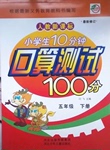题目内容
With a good _____ of French and English, Maggie got the job in the international company.
A. request B. usage C. command D. quality
C
【解析】考察固定用法的辨析。A要求,请求;B用法,用途;C命令;D质量。“由于梅吉精通法语和英语,她在一个跨国公司找到了工作”这里有一个很重要的固定用法“a good command of ”用的比较少,可能对于学生有些困难,故选C
考点:考察固定用法

练习册系列答案
 小学生10分钟口算测试100分系列答案
小学生10分钟口算测试100分系列答案
相关题目
作文:假设你叫李华,是第三中学的学生,要给市长写封信,反映学校门前交通拥挤的现象,包括以下要点:(词数为120左右)。参考词汇:天桥overpass
问题 | 建议 |
1.学校和一所小学毗邻,对着主干道,高峰期交通繁忙; 2.孩子年龄小,需要家长接送,交通更拥挤; 3.学生过街时在车辆中穿行很危险。 | 政府应采取措施,如修过街天桥等。 |